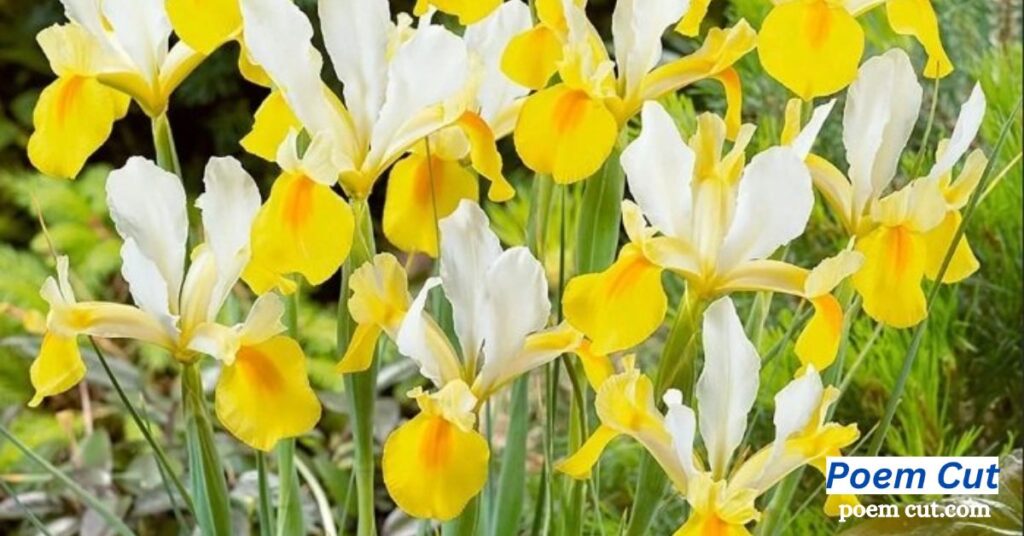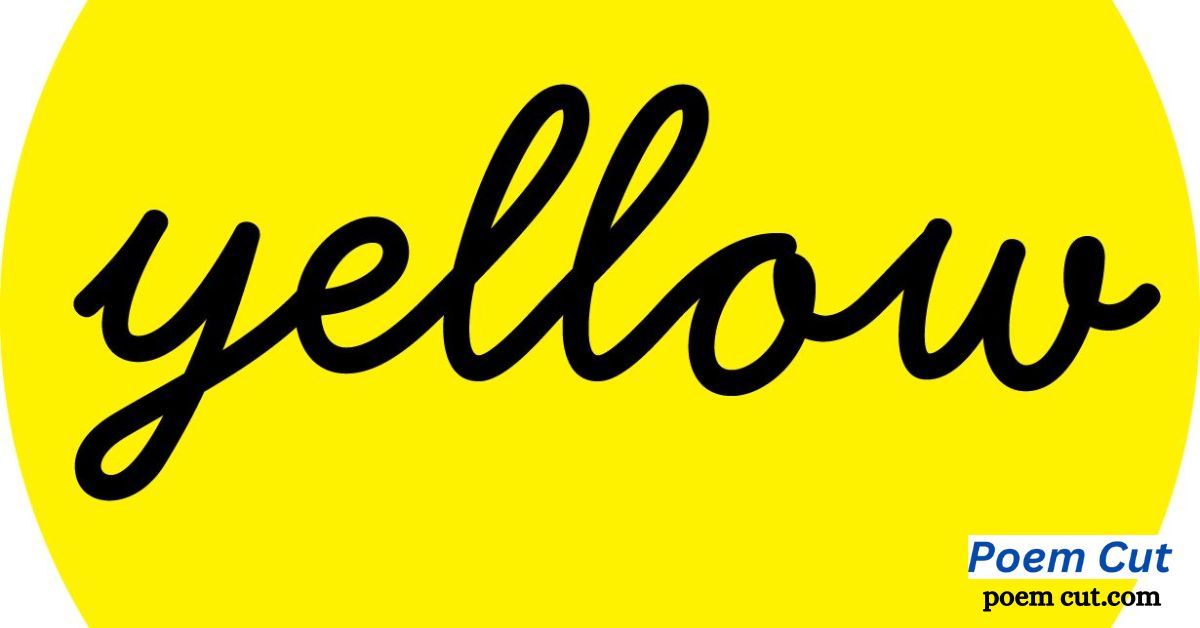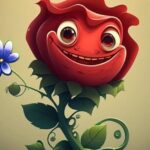Yellow is a little more than just a color; it is an emotion, a symbol, and a story waiting to be told within an individual. Yellow has been long considered by poets as an emotion for warmth, happiness, and light. This is the golden hue of a sunflower stretching up toward the sky, buttery morning light streaming through the window, and flickering candle flames in darkness. But yellow also brings a lot of complex things with it: the sickly tinge of an old sheet of paper, the faded vibrancy of autumn leaves, or the warning of a traffic light that stops time.
Yellow, commensurate with up to white signs of joy, degeneration, good hope, and caution, has been the medium entirely for the poetic forays. Let’s dive into the beauty and subtlety of what yellow really means in verse.
Why Write Yellow Poems?

Poetry substrates itself in imagery and colors, which in turn bring on emotion and meaning. Yellow, usually linked with warmth and cheerfulness, acquires greater meanings:
- Happiness & Hope – The golden sun, blooming daffodils, childhood laughter.
- Decay & Illness – A fading bruise, jaundiced skin, old photographs.
- Caution & Warning – Traffic lights, caution tape, buzzing bees.
- Mysticism & Enlightenment – The glow of wisdom, halos in religious art, candlelit prayers.
Yellow is good for infusing a poem with energy, whether rambunctiously bright or eerily melancholic. Here, to prove this, are stanzas of poetry to emulate the daring spirit of yellows.
Famous Poems About Yellow
1. “Ode to a Lemon” by Pablo Neruda
Pablo Neruda, a master of sensory language, paints yellow in the guise of an almost celestial fragrance:
Lemon flowers From:
A perfumed version of the lashed and insatiable essences of love:
heavy with perfume emerges bright yellow from the lemon tree:
into the free fall of synergism come lemons from the planetarium of the tree.
Here, yellow takes on an intoxicating and almost mythical role—life distilled into a citrus glow.
2. “Sonnet” by C.W. Bryan
While yellow is often associated with light, Bryan’s poem uses it in a haunting way:
The air is sick with pallid yellow light
A jaundiced fog swimming throughout the night
Across a lonely road of ashen gray
I am there caught, alone, and swept away
Yellow, in this case, is not joy; it is sickness, lonesomeness, mystery. The poet subverts expectations, showing how a color usually associated with happiness can also equally connote discomfort and foreboding.
Expanding on the Meaning of Yellow in Poetry
Yellow as a Symbol of Life and Death
Consider a sunflower at the height of its bloom, proud and radiant. Now imagine that same flower wilting, the gold petals curling inward. Yellow captures its zenith and the soft descent into life.
The Contrast of Light and Darkness
Yellow is light as well as disorientation, comfort by the light of a candle in a dark room, and cold clinicality by flickering fluorescent lights in a hospital hallway. The poets use all these to bring yellow to the brink where clear boundaries change into disorienting terms.
A Color of Memory and Nostalgia
A faded sepia photograph; a yellowed sheet of a dearly loved book; childhood drawings with golden suns-yellow often finds its place in poems about memory, brief happiness, and the passage of time.
Writing Your Own Yellow Poem
Want to explore the many shades of yellow in your writing? Here are a few prompts to get you started:
- Describe a perfect golden summer day—but introduce a twist of sadness.
- Write about a yellow object that holds deep personal meaning to you.
- Imagine a world where everything is bathed in yellow light. What does it feel like?
- Use yellow as a symbol of transformation in a poem about change.
Here’s a rewritten version with expanded details and richer imagery while maintaining the poetic essence of the originals.
Japanese Varnish Tree (Expanded from C.W. Bryan’s poem)
Midsummer arrives, cloaking the branches
in a golden veil of delicate bloom.
Each petal, finer than winter’s touch,
breathes warmth into the restless wind.
You may think it is the heat—
the merciless, unrelenting heat—
flattening panicles, making them bow
beneath the glare of an unshaded sun.
Veins open, offering up their lifeblood
to the sky’s embrace, frictionless and free.
But beware of easy answers,
for even the smoothest path
hides the weight of its journey.
I fear the things that glide too easily,
that whisper without resistance.
How much uncertainty can be borne
in exchange for beauty, for refinement?
Winter does not hesitate.
It does not ask—only takes.
The yellows, so vibrant in their prime,
fade into the quiet hush of brown,
lost in the hush of cold winds.
I Wandered Lonely as a Cloud (Expanded from William Wordsworth’s poem)
I wandered lonely as a drifting cloud,
adrift on winds both high and free,
gliding o’er valleys green and wide,
o’er hills that whispered back to me.
Then suddenly, like golden light,
a host of daffodils appeared,
stretching wide in endless bloom,
like sun-kissed stars, bright and clear.
Beside the lake, beneath tall trees,
they swayed and danced in wild delight,
a chorus caught within the breeze,
petals gleaming, gold and bright.
They stretched as far as sight could go,
a ribbon spun of nature’s grace.
Ten thousand blooms, a shining glow,
tossing heads in a joyful chase.
The waves beside them joined the song,
but could not match their golden cheer.
A poet’s heart could not be wrong
to bask in beauty bright and near.
I gazed and gazed, but only learned
long after, what this sight had brought—
a wealth unseen, a joy that burned
within my soul, a lasting thought.
For oft, when I am lost in thought,
reclining in some silent room,
the daffodils return to me—
they bloom anew within the gloom.
Their golden faces light my mind,
their dance brings laughter soft and free.
And in that moment, joy is mine,
as my heart sways in memory.
Yellow Goblins (Expanded from Fanny Howe’s poem)
Yellow goblins, darting fast,
flitting through the dusky air.
Shapes that slither, dance, and pass,
whispering secrets everywhere.
A god I can swallow whole,
one who moves within the wind,
leaving echoes in my soul—
where does reverence begin?
Eyes watch from the evergreens,
glimmering beneath the frost.
Shadows slip through veils unseen,
suspended, silent, lost.
Interior monologues spiral and spin,
twisting thoughts with spectral grace.
A voice emerges, deep within,
but leaves no trace, no place.
Weariness lingers, fears remain,
a cycle woven tight and thin.
Yet within trials, loss, and pain,
there’s space where blessings settle in.
Symphony in Yellow (Expanded from Oscar Wilde’s poem)

An omnibus drifts across the bridge,
creeping slow like a butterfly bright,
its yellow hue a fleeting glow
against the early autumn light.
Passersby, small restless ghosts,
dart and weave through fading mist.
Their shapes dissolve, then reappear,
like whispers lost in twilight’s twist.
Big barges, laden with golden hay,
sway upon the river’s tide.
Their shadows press against the docks,
as fog unfurls, silk-soft and wide.
The Thames, a streak of molten jade,
moves beneath the thinning leaves.
They flutter down in slow descent,
a farewell whispered by the trees.
The season shifts, the colors pale,
as autumn hums its quiet tune.
A fleeting glow, a final breath,
before the hush of winter’s moon.
Here’s a revised and expanded version of the poem with richer imagery and more descriptive details:
Yellow
By Phoebe Fischer (Expanded Version)
Yellow’s a smiley face, warm and bright,
A sunbeam dancing in morning light.
A honey-suckle vine in bloom,
A field of daisies in full perfume.
Yellow’s a big ol’ pile of hay,
Where children laugh and kittens play.
It’s the crunch of corn in autumn’s cheer,
A golden leaf when fall is near.
Yellow’s the sparkle in hopeful eyes,
A painted sunrise in open skies.
It’s the glow of lanterns in the night,
A firefly’s flicker, soft and light.
Yellow’s a medal an athlete would win,
A trophy shining with pride within.
It’s a crayon box and a brand-new pencil,
A bright balloon with a floating stencil.
Yellow’s the laughter of carefree days,
A summer dress in golden rays.
It’s lemonade on a scorching noon,
A happy whistle—a merry tune.
Yellow’s the hum of a buzzing bee,
The golden sand by the rolling sea.
It’s a buttercup, a candle’s gleam,
A thread of joy in every dream.
Here’s a strong conclusion for a blog post about “Poems About Yellow”:
Conclusion
Since ancient times, yellow, with all its warmth, radiance, and vibrance, has provided endless poetic inspiration. Whether it is happiness, hope, nostalgia, or sadness, this color moves powerful emotion across cultures and the artistic tradition. From the golden glow of the sun to the soft petals of a daffodil-yellow has been captured in poetic heart-wrenching ways that tug at the heartstrings and stir the spirit.
So much then, via the poems, yellow transcends being merely a color; rather, yellow would come to symbolize light, life, and love. The poetic interpretations of yellow, whether bright-hued or much subdued, serve to liberate both passion and melancholy, encouraging recognition of that beauty surrounding us always.
FAQs
What do poems about yellow symbolize?
They often symbolize happiness, warmth, and hope, reflecting sunshine and positivity.
Which famous poets have written about yellow?
Emily Dickinson and Robert Frost used yellow to depict nature, light, and transition.
What emotions do yellow-themed poems evoke?
They evoke joy, nostalgia, and sometimes melancholy, depending on the poet’s intent.
How can I write a poem about yellow?
Use imagery of sunlight, flowers, autumn leaves, and emotions tied to warmth and brightness.
What are common themes in yellow poems?
Themes include nature, childhood memories, optimism, and the changing seasons.








